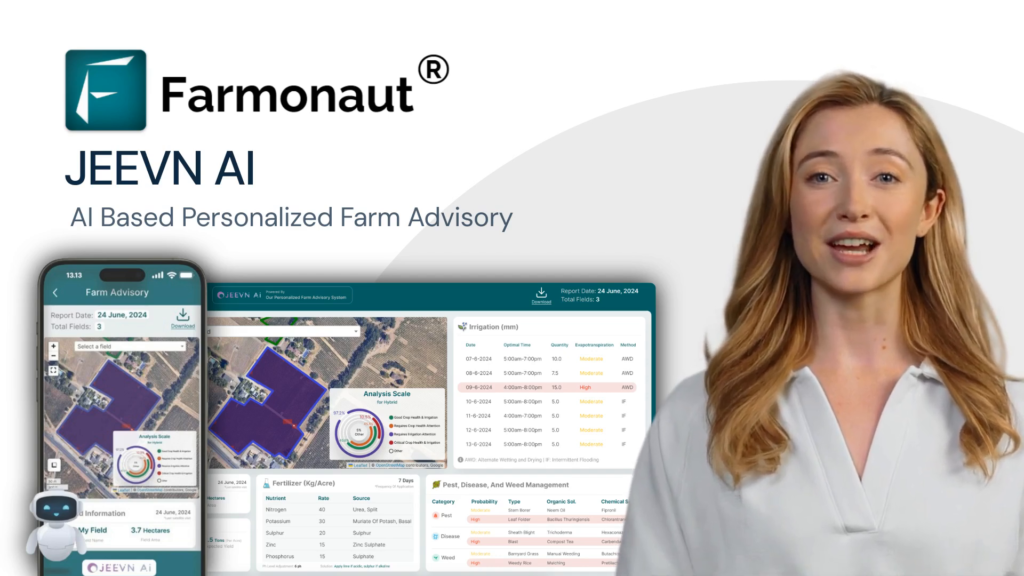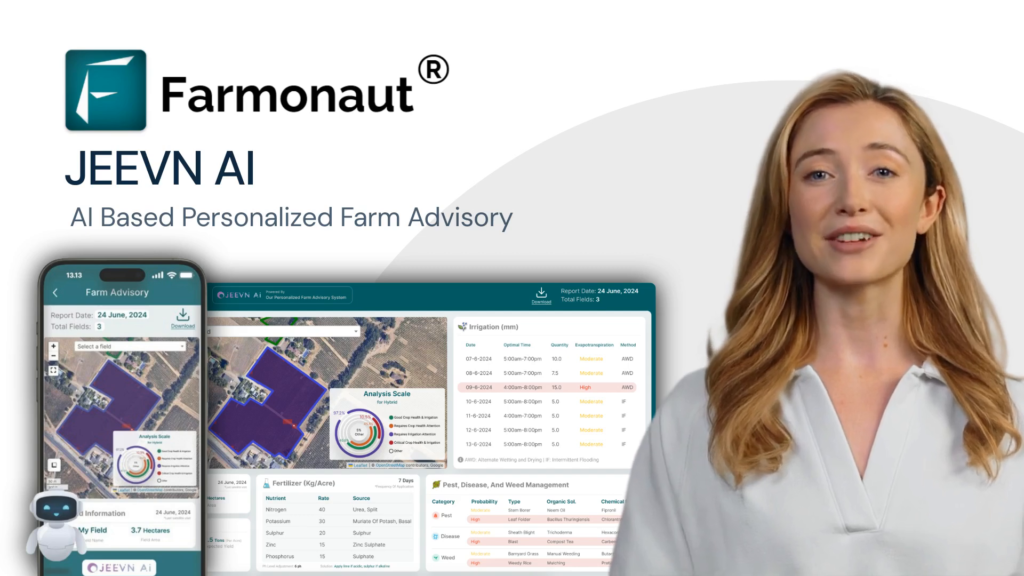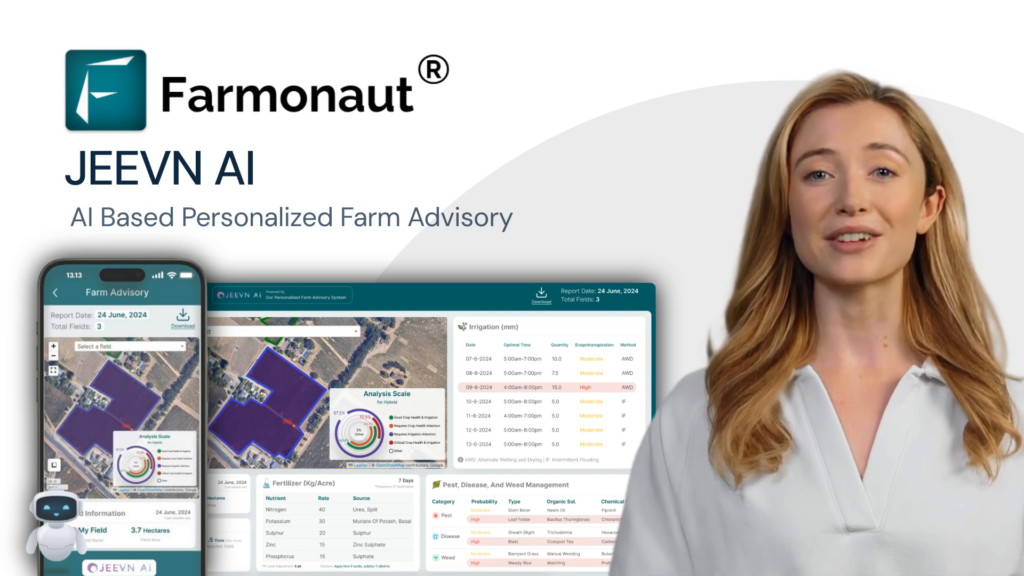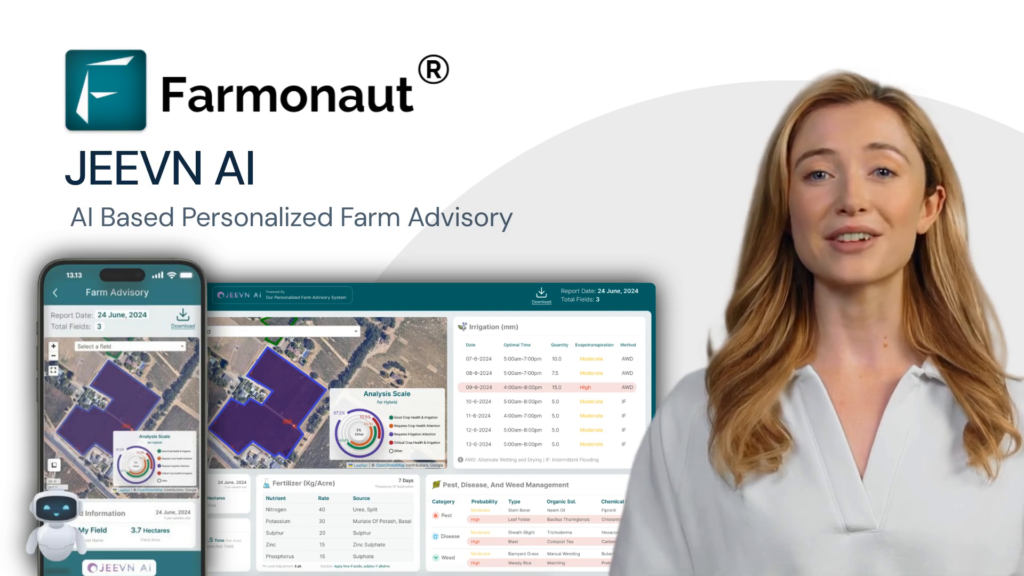7 Effective Ways Bluestem Preserves Minnesota’s Prairie Nature
Table of Contents
- Introduction: Exploring Prairie Conservation at Bluestem
- Trivia: Fascinating Facts about Bluestem Prairie
- Why Conserve Minnesota’s Prairie Nature?
- List: 7 Effective Ways Bluestem Preserves Minnesota’s Prairie Nature
- 1. Protecting Remnant Prairie Habitats
- 2. Restoring Native Grasslands and Wildflowers
- 3. Promoting Biodiversity in Grasslands
- 4. Engaging in Collaborative Prairie Ecosystem Management
- 5. Improving Water Quality and Flood Resilience
- 6. Enhancing Carbon Sequestration and Air Quality
- 7. Enabling Public Access, Education, and Scientific Research
- Conservation Impact Overview Table
- Farmonaut: Advancing Conservation and Sustainable Agriculture
- Frequently Asked Questions
- Conclusion: Prairie Conservation for Future Generations
“Bluestem Preserve protects over 600 acres of native Minnesota prairie, supporting more than 200 wildflower and grass species.”
Introduction: Exploring Prairie Conservation at Bluestem
As spring arrives near Glyndon, Minnesota, vibrant wildflowers begin their annual emergence close to the ground—carpeting the landscape in white, yellow, and subtle pink. This is the remarkable Bluestem Prairie Preserve, where more than mere beauty unfolds. Here, surrounded by dry grasses and the occasional darting bird or curious ground squirrel, we witness not only seasonal renewal but also the power of prairie conservation.
We believe it is essential to conserve and restore the prairies that define so much of the upper Midwest’s natural landscape. Our work at Bluestem Prairie—located just 30 minutes from Moorhead—reflects coordinated efforts among diverse organizations, including The Nature Conservancy, Minnesota State University Moorhead (MSUM), and state and regional partners. Through stewardship, research, and public engagement, we unite in pursuit of biodiversity, climate resilience, and healthy habitats.
In this comprehensive guide, we’ll explore the seven most effective ways Bluestem Prairie actively preserves and restores Minnesota’s native prairie nature. Along the way, we’ll examine critical methods like protecting remnant prairies, restoring grassland ecosystems, and harnessing sustainable practices that benefit all life across this precious region.
Why Conserve Minnesota’s Prairie Nature?
Prairies are more than just open fields of tall grasses—they are living, breathing ecosystems teeming with biodiversity. In North and South Dakota, as well as western Minnesota, these lands once stretched for miles, functioning as cradles for hundreds of native plants, animals, birds, and vital pollinators. Today, only a small part of original (remnant) prairie remains, as much of it was plowed under or developed for agriculture.
- Habitat for Imperiled Species: Conservation preserves the habitat that countless wildlife, including birds like the prairie-chicken, need to survive.
- Biodiversity Hotspot: Bluestem, for example, supports more than 300 different plant species and hosts over 100 types of birds, demonstrating the immense richness of biodiversity in grasslands.
- Ecosystem Services: Prairie plants improve air and water quality, store carbon dioxide, prevent erosion, and moderate flooding.
- Cultural and Educational Value: These public prairie nature areas serve as outdoor classrooms and places for reflection, connecting communities with nature.
At Bluestem Prairie, every acre we protect, restore, and actively manage is a pivotal step toward a more resilient and sustainable regional ecosystem. Let’s explore the seven central methods through which this acclaimed Minnesota prairie preserve preserves prairie nature for today and future generations.
List: 7 Effective Ways Bluestem Preserves Minnesota’s Prairie Nature
- Protecting Remnant Prairie Habitats
- Restoring Native Grasslands and Wildflowers
- Promoting Biodiversity in Grasslands
- Engaging in Collaborative Prairie Ecosystem Management
- Improving Water Quality and Flood Resilience
- Enhancing Carbon Sequestration and Air Quality
- Enabling Public Access, Education, and Scientific Research
Let’s examine how each method collectively powers our prairie conservation mission.
“Minnesota’s Bluestem Prairie is home to 100+ bird species, making it a biodiversity hotspot for conservation efforts.”
1. Protecting Remnant Prairie Habitats
Our first and perhaps most fundamental step in prairie conservation at Bluestem is safeguarding remnant prairie—those rare patches of land that remain essentially unchanged since before European settlement. Unlike converted farmlands, these original prairies have never been plowed or developed for large-scale agriculture.
- What Makes Remnant Prairie Unique? – These areas retain their full suite of native plants, from Prairie Smoke and Pasqueflower in early spring to tall grasses like Big Bluestem.
- Preserving the Legacy of Nature: Remnant prairies store millennia of biodiversity, support complex soil microbial communities, and act as vital genetic reservoirs for restoration projects.
At Bluestem, over 6,000 protected acres include significant tracts of such unbroken prairie, forming the foundation for a robust grassland ecosystem.
2. Restoring Native Grasslands and Wildflowers
While remnant prairies offer a glimpse of the past, prairie restoration brings hope for the future. At Bluestem, our teams actively reclaim and restore lands previously used for agriculture—returning them to functioning native grasslands through science-driven practices.
- Seed Collection: We gather seed from local remnant prairies to ensure genetic diversity and resilience.
- Reseeding and Planting: Once seeds are collected, we reseed former cropland and nurture the growth of prairie wildflowers in spring, tall grasses, and other indigenous flora.
- Ongoing Care: Restored acres require continued management—controlling invasives, monitoring plant communities, and ensuring establishment of native species.
Restored prairies not only beautify the landscape with white, yellow, and pink blooms each spring, but also repair ecological functions critical to Minnesota’s health.
3. Promoting Biodiversity in Grasslands
A defining feature of Bluestem Prairie is its extraordinary biodiversity in grasslands. Protecting and restoring these prairie habitats creates an environment where over 300 different plant species thrive, providing essential resources for a multitude of insects, birds, and other animals.
- Prairie Wildlife and Plants: We regularly observe species from prairie-chickens and ground squirrels to milkweed butterflies and snakes.
- Wetland Diversity: The Pothole Region of Minnesota and North Dakota features shallow, glacier-carved wetlands that support unique shore birds and aquatic life.
- Supporting Threatened Species: Our efforts strengthen the habitat for animals listed as imperiled, expanding their chances of survival.
Bluestem’s management directly sustains more than 100 bird species—making it essential for both conservationists and birdwatchers alike.
4. Engaging in Collaborative Prairie Ecosystem Management
True prairie ecosystem management demands coordinated action. At Bluestem, we constantly collaborate with state resources like the Minnesota DNR (Department of Natural Resources) and academic partners such as MSUM (Regional Science Center).
- Controlled Burns: Prescribed fire is essential for maintaining prairie health. By mimicking natural fires, we suppress invasive species and invigorate native grasses.
- Invasive Species Control: Together, we strategize and act to remove or contain invasive plants that threaten prairie balance.
- Wildfire Readiness: Specialized teams are on standby for fire management across both preserve and neighboring park lands.
- Land Connectivity: By combining multiple adjacent properties (Bluestem Preserve, Buffalo River State Park, and more), we expand the reach and effectiveness of habitat management.
The result is a patchwork of open prairie and restoring native habitats whose management strengthens the area’s natural resilience and supports biodiversity at a landscape scale.
Bluestem’s scale benefits: Research and conservation show that the larger and more connected the prairie corridor, the more robust and enduring it is for the entire ecosystem.
For large-scale ecosystem stewardship, satellite-based monitoring is crucial. Farmonaut’s Large Scale Farm Management solution empowers land stewards to assess and track landscape health, manage diverse parcels, and optimize conservation strategies using real-time data and precision analytics.
5. Improving Water Quality and Flood Resilience
One of the oft-overlooked values of prairies—and especially of Bluestem’s protected prairie habitats—is their role in water management and flood protection.
- Prairie “Sponges”: Deep-rooted native grasses absorb and slow rainwater runoff, reducing both flash flooding and erosion during heavy events.
- Natural Water Filters: These roots and organic soils trap sediments and excess nutrients before they reach rivers, including the nearby Buffalo River and major regional waterways.
- Pothole Wetlands: Unique to the region, shallow wetlands dot many prairie landscapes, supporting aquatic life and providing seasonal habitat for breeding birds and amphibians.
This “green infrastructure” not only sustains prairie wildlife and plants but is a key strategy for improving the water quality that communities across north and south Minnesota depend on.
Interested in tracking your land or organization’s water use and carbon efficiency? Farmonaut’s Carbon Footprinting tool provides actionable environmental metrics, including water and carbon budgets for sustained stewardship. This makes it easier to plan restorative actions for maximum sustainability impact.
6. Enhancing Carbon Sequestration and Air Quality
As prairies photosynthesize each day, they act as global allies in the battle against climate change. Bluestem’s grasses sequester “invisible” carbon dioxide far beneath the surface, storing it in deep root systems which can persist for decades—even centuries.
- Why Carbon Storage Matters: Reducing carbon dioxide in the atmosphere slows the pace of global warming and builds resilience against extreme weather.
- Additional Benefits: Prairie plants filter air pollution, and healthy soils convert nutrients and store organics, creating a self-sustaining feedback loop.
It’s estimated that healthy prairies can capture and store over 2 tons of CO₂ per acre each year—making prairie preservation an essential climate strategy.
Transparency in conservation supply chains matters. Using Farmonaut’s Traceability solutions, organizations can ensure that restoration projects are authentic and verifiable, benefitting not just biodiversity but also carbon reporting and consumer trust in sustainable products.
7. Enabling Public Access, Education, and Scientific Research
A thriving Minnesota prairie preserve must inspire and educate. That’s why Bluestem remains open to the public—inviting all to explore winding trails, observe birds, and witness the marvel of prairie wildflowers in spring.
- Public Nature Areas: Bluestem, along with Buffalo River State Park and the MSUM Regional Science Center, creates a contiguous complex for recreation, reflection, and research.
- Student Engagement: Students from MSUM and beyond conduct field studies in prairie ecology, animal behavior, and land management.
- Community Outreach: Bird-watching, nature hikes, and guided tours reveal the hidden diversity of prairies to all ages.
- Scientific Discovery: Each year, research at Bluestem yields new insights into conservation effectiveness, restoration techniques, and long-term resilience.
Protection and education go hand-in-hand, creating a legacy for biodiversity, science, and public access for generations.
Field researchers and restoration teams can enhance project results by using Farmonaut’s Crop, Plantation & Forest Advisory App. This advanced platform offers data-driven insights into growth, vegetation indices, and resource management—empowering science-based habitat restoration and monitoring.
Conservation Impact Overview Table
Are you a developer or agri-tech researcher? Access Farmonaut’s robust Satellite/Weather API for seamless farm, conservation, or research integration. For documentation, visit the API Developer Docs.
Farmonaut: Advancing Conservation and Sustainable Agriculture
As we strive to conserve and restore grasslands like those at Bluestem Prairie, the need for innovative monitoring tools and sustainable management solutions grows. Farmonaut stands at the intersection of agriculture, conservation, and technology—providing farm management resources that ease data-driven decisions at every scale of land stewardship.
How Farmonaut Empowers Prairie Conservation, Restoration & Research
- Satellite Crop Health Monitoring: Analyze vegetation vigor, soil moisture, and growth stage across extensive preserves without costly on-ground surveys.
- AI-Based Advisory Tools: Receive timely, site-specific recommendations for grassland restoration, weed management, resource optimization, and weather patterns.
- Blockchain Traceability: Track every step in habitat restoration or conservation-based farm supply chains, ensuring transparency from seed to sustainable product.
- Fleet and Resource Management: Coordinate machinery and logistics for land, resource, or burn management projects via intuitive web and app dashboards.
- Carbon Footprinting: Quantify and reduce your operation or organization’s carbon impact in real time with actionable analytics, furthering climate smart stewardship.
Farmonaut’s platform is available via browser, Android, and iOS—with subscription packages for individual landowners, conservation groups, research teams, and agri-businesses of every size.
- No expensive hardware needed—satellite monitoring is seamless, precise, and scalable.
- Integration is effortless with Farmonaut’s powerful API, creating synergy between field and digital data.
- AI guidance and automated reporting ensure your prairie restoration delivers measurable results—on both climate and biodiversity fronts.
You can learn more about Farmonaut subscriptions and powerful satellite/AI farm management solutions below:
Frequently Asked Questions (FAQ)
What makes Bluestem Prairie Preserve unique in Minnesota?
Bluestem Prairie Preserve stands out as one of Minnesota’s largest and most intact native grasslands. It contains both remnant prairie—never plowed for agriculture—and restored lands, supporting more than 300 plant species and over 100 species of birds. Its vast, contiguous habitat is a lifeline for biodiversity, research, and public enjoyment.
Why are remnant prairies so important?
Remnant prairies are original grasslands that have never been tilled, providing irreplaceable genetic diversity. Protecting these preserves complex ecological relationships and resilient plant communities, many of which are rare or endangered elsewhere.
How does Bluestem restore former agricultural land?
Restoration involves collecting native seeds from local prairies, removing non-native or invasive species, reseeding, and managing grasses and wildflowers until a resilient, diverse habitat returns.
What is Farmonaut, and how can it help conservation groups?
Farmonaut is a leading agricultural technology company, offering satellite-based data, precision monitoring, AI-driven advisory, and resource management tools for farmers, landowners, and environmental stewardship organizations. By using Farmonaut, conservation teams can monitor prairie health, carbon sequestration, and restoration outcomes in real-time, optimizing prairie ecosystem management.
Is Bluestem Prairie Preserve open to the public?
Yes, Bluestem Prairie Preserve welcomes visitors for hiking, birdwatching, and exploration. However, please respect the land by not collecting flowers or seeds, and by remaining on marked paths to protect fragile habitats.
What can individuals do to support prairie conservation?
Get involved by visiting local preserves, volunteering for prairie management projects, advocating for conservation funding, or incorporating native plants into your landscaping. Small actions, combined with large-scale stewardship, build powerful momentum for the region’s prairies.
Conclusion: Prairie Conservation for Future Generations
Bluestem Prairie Preserve is more than an open land—it’s a living model for how we can protect, restore, and sustain the natural wonders of Minnesota. By combining wildlife-friendly land management, innovative science, public engagement, and data-driven technology, we ensure that the prairie wildflowers in spring, the haunting calls of prairie birds, and the communities who value them all have a future.
As we move forward, embracing prairie conservation and native grassland restoration is not only a commitment to environmental stewardship but a promise to future generations. Let us continue to value, visit, and vigilantly defend our public prairie nature areas, making Bluestem—and prairies like it across the upper Midwest—a place where life truly depends on what we protect today.
For those eager to participate, innovate, or monitor their own conservation projects, Farmonaut stands ready to support your journey to a greener, more resilient, and biodiverse world, one acres at a time.


















